Fri 7 Jan 2022
Watching a wake of vultures
Posted by DavidMitchell under History, West Marin nature, Wildlife
[2] Comments
Caveat lectorem: When readers submit comments, they are asked if they want to receive an email alert with a link to new postings on this blog. A number of people have said they do. Thank you. The link is created the moment a posting goes online. Readers who find their way here through that link can see an updated version by simply clicking on the headline above the posting.
This is a belated review of an entertaining linguistic book, A Charm of Goldfinches and Other Wild Gatherings. It was originally published five years ago by Ten-Speed Press. My wife Lynn gave it to me for Christmas. The author, Matt Sewell, is a Canadian ornithologist, illustrator, and artist who has exhibited in London, Manchester, New York, Tokyo, and Paris.

As most of us know, a group of geese is called a “gaggle” but if the geese are flying in formation, the proper term is “skein,” writes Sewell. The term “comes from an old French word for ‘V’ Formation.”
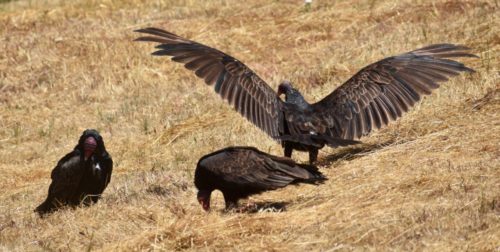
Some group names are grim but accurate. Here a “wake” of vultures divvy up a skunk killed by an owl.
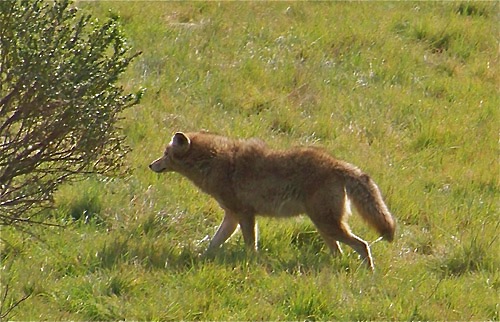
Virtually every night at Mitchell cabin we can hear a “band” of coyotes howling.
Groups of coyotes are called “bands” although to my mind, “choirs” would be more accurate. Sewell notes that “outside of their guarded family units, coyotes hang together in unrelated gangs, scavenging and doing whatever coyotes do.”
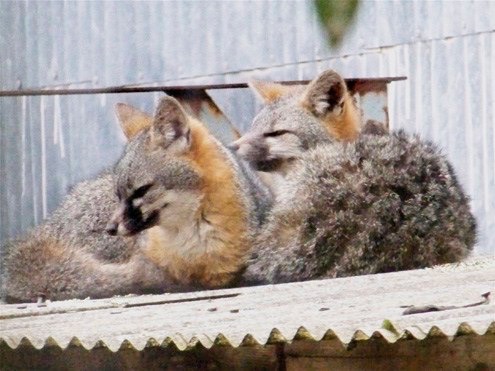
A “sulk” of foxes atop a shed at Toby’s Feed Barn. These were spotted by postal staff outside a postoffice window.
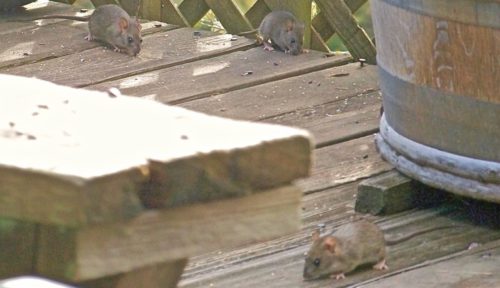
A “plague” of rats. Given my recent experience with roof rats, I would second the group name “plague.” Roof rats found their way into my car’s engine compartment around Christmas and chewed wiring, piled up debris, and damaged the car’s computer. The final tab at garages in Point Reyes Staton and Santa Rosa to repair the damage came to more than $2,500.
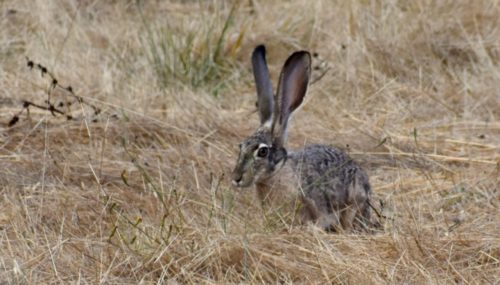
A “trip” of rabbits.
Sewell frequently indulges his ironic sense of humor. Describing how groups of rabbits came to be called “trips,” Sewell writes: “Now, some of you may be thinking: the trip would be to follow the white rabbit down the rabbit hole. Â Sadly not: this term is from the 15th century, not the 1960s Jefferson Airplane lyric, or even Lewis Carroll’s Alice in Wonderland, which inspired the song. It is, in fact, about as psychedelic as a turnip patch.
“A colony of rabbits is a flighty bunch, not surprisingly, as the whole world is their enemy…. They are rarely safe for long, not when they’re hunted by hawks and owls, weasels, foxes, domestic pets, and humans, to name just a few.”
As noted previously, “jackrabbit” is short for “jackass rabbit,” a nickname it got because of its ears.
A “ lounge” of lizards. This is a blue-belly lizard on the wall of our cabin.
lounge” of lizards. This is a blue-belly lizard on the wall of our cabin.
Lizards are cold-blooded “so they need to warm up from the sun or on warm stones.”
“It’s this lounging that gets them into trouble though as lizards are easy prey in this laid-back state.
“If they are cruelly snatched, lizards at least have a last-gasp mechanism for freedom: they can release their tail, which will wriggle around in the predator’s mouth, confusing the daylights out of it while the lizard makes a dash for the undergrowth.”
I hope it gets there safely.

Especially love your photo of the foxes, as well as the others.
I’ve always been fond of “a murder of crows” as well as of “an unkindness of ravens.” Plenty of the former around our house; I must admit I preferred the ravens at our former Ocean Beach home for their deeper, more melodious croaks. Crows always remind me of the bleak of winter in Switzerland, even when it’s sunny here.